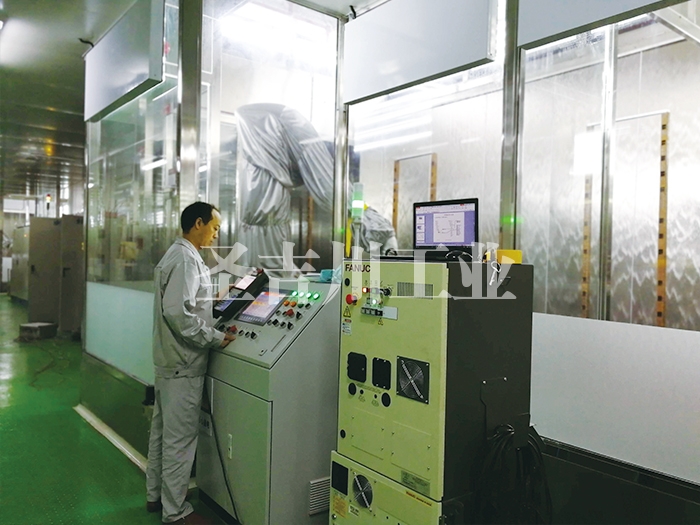
System composition
The robot system is composed of the robot, the work object and the environment, including the mechanical system, the drive system, the control system and the perception system.
computer system
The mechanical system of an industrial robot includes the body, arm, wrist, end manipulator, and walking mechanism. Each part has several degrees of freedom to form a multi-degree-of-freedom mechanical system. In addition, some robots also have a walking mechanism. If the robot has a walking mechanism, it constitutes a walking robot; if the robot does not have a walking and waist rotation mechanism, it constitutes a single robot arm. The end manipulator is an important part directly mounted on the wrist. It can be a two-finger or multi-finger claw, or a spray gun, welding torch and other working tools. The role of the industrial robot mechanical system is equivalent to the human body (such as bone marrow, hands, arms, legs, etc.).
Drive System
The drive system mainly refers to the drive device that drives the action of the mechanical system. According to the different driving sources, the driving system can be divided into three types: electric, hydraulic and pneumatic, and a comprehensive system that combines them. The role of this part is equivalent to human muscles.
Electrical drive systems are widely used in industrial robots, and can be divided into three drive forms: stepping motors, DC servo motors and AC servo motors. In the early days, stepper motors were used to drive, and then DC servo motors were developed, and AC servo motor drives are gradually being used. Some of the above-mentioned driving units are used to directly drive the movement of the mechanism: some are used to drive the mechanism to move after being decelerated by a harmonic reducer, and the structure is simple and compact.
The hydraulic drive system moves smoothly and has a large load capacity. For heavy-duty handling and parts processing robots, it is reasonable to use hydraulic drive. However, the hydraulic drive has disadvantages such as complicated pipelines and difficult cleaning, which limits its application in assembly operations.
Regardless of whether the robot is driven by electric or hydraulic pressure, the opening and closing of the claw adopts pneumatic form. The pneumatic-driven robot has simple structure, rapid action and low price, but due to the compressibility of air, the stability of its working speed is poor. However, the compressibility of air can improve the compliance of the claw when grasping or clamping objects, and prevent the damage of the grasped object or the claw itself caused by excessive force. The pressure of the pneumatic system is generally 0.7 MPa, so the gripping force is small, only tens of cattle to hundreds of cattle. [2]
Control System
The task of the control system is to control the actuator of the robot according to the robot's work instruction program and the signal fed back from the sensor to complete the specified movement and function.
If the robot does not have information feedback features, the control system is called an open-loop control system; if the robot has information feedback features, the control system is called a closed-loop control system. This part is mainly composed of computer hardware and control software. The software is mainly composed of human-computer interaction systems and control algorithms that connect humans and robots. The role of this part is equivalent to the human brain.
Perception system
The perception system is composed of internal sensors and external sensors. Its function is to obtain information about the internal and external environment of the robot and feed this information back to the control system. The internal state sensor is used to detect variables such as the position and speed of each joint, and provide feedback information for the closed-loop servo control system. The external state sensor is used to detect some state variables between the robot and the surrounding environment, such as distance, proximity and contact conditions, etc., to guide the robot to facilitate its recognition of objects and make corresponding processing. External sensors enable the robot to react to the environment it is in in a flexible way, giving the robot a certain amount of intelligence. The function of this part is equivalent to the five senses of a person.
contact us
Service hotline
13962651551 / 15962653322
Address: No. 12, Taihu South Road, Kunshan Economic and Technological Development Zone, Jiangsu Province
URL:www.sjcgy.com

Official WeChat
Into shengjichuan+
Product Center+
Case presentation+
News and information+
